So mangroves are being unsustainably deforested. What’s the big deal?
I’ve been part of Blue Ventures’ (BV) programme for mangrove conservation – Blue Forests – for six years, and I’ve worked alongside communities in Madagascar for whom mangroves mean everything. These forests support the fisheries that underpin local livelihoods and food security; they provide the materials used to build people’s homes and light their fires; and they offer some protection from the effects of the cyclones that regularly strike Madagascar’s coastlines.
The trouble is that when coastal populations increase, so too does demand for fuelwood, charcoal and seafood. I work in northwest Madagascar. With warm weather and plenty of rainfall, it is one of the most productive regions in the country. In recent years, as other areas of Madagascar have struggled with drought and low agricultural productivity, many people have moved to the region in the hope of feeding their families and securing their incomes.
This migration has in part been responsible for the loss of almost a quarter of total mangrove area between 1990–2010, making these mangroves the most threatened in the country. And even more mangrove forest has been lost since then.
However, it’s not all bad news.
In the Tsimipaika Bay area of northwest Madagascar, community-led mangrove management has taken off in the last few years, including a fisheries management plan, the transferal of management rights to communities from the government, and the introduction of fuelwood plantations.
Once we can put a price on the value of blue carbon, companies looking to offset their carbon emissions will be able to finance community-led mangrove conservation, restoration and management.
And alongside all of that, Blue Ventures has been working on monetising the value of the carbon stored in mangrove ecosystems, known as “blue carbon”. That’s where I come in. Since 2013 I’ve been working to quantify the blue carbon value of the mangroves in Tsimipaika Bay.
How will this help? Once we can put a price on the value of blue carbon, companies looking to offset their carbon emissions will be able to finance community-led mangrove conservation, restoration and management.
This is easier said than done. Quantifying the blue carbon in an area the size of Tsimipaika Bay (4,500 hectares of mangroves!) is a massive job. However there have been some key moments along the way that have made a world of difference.
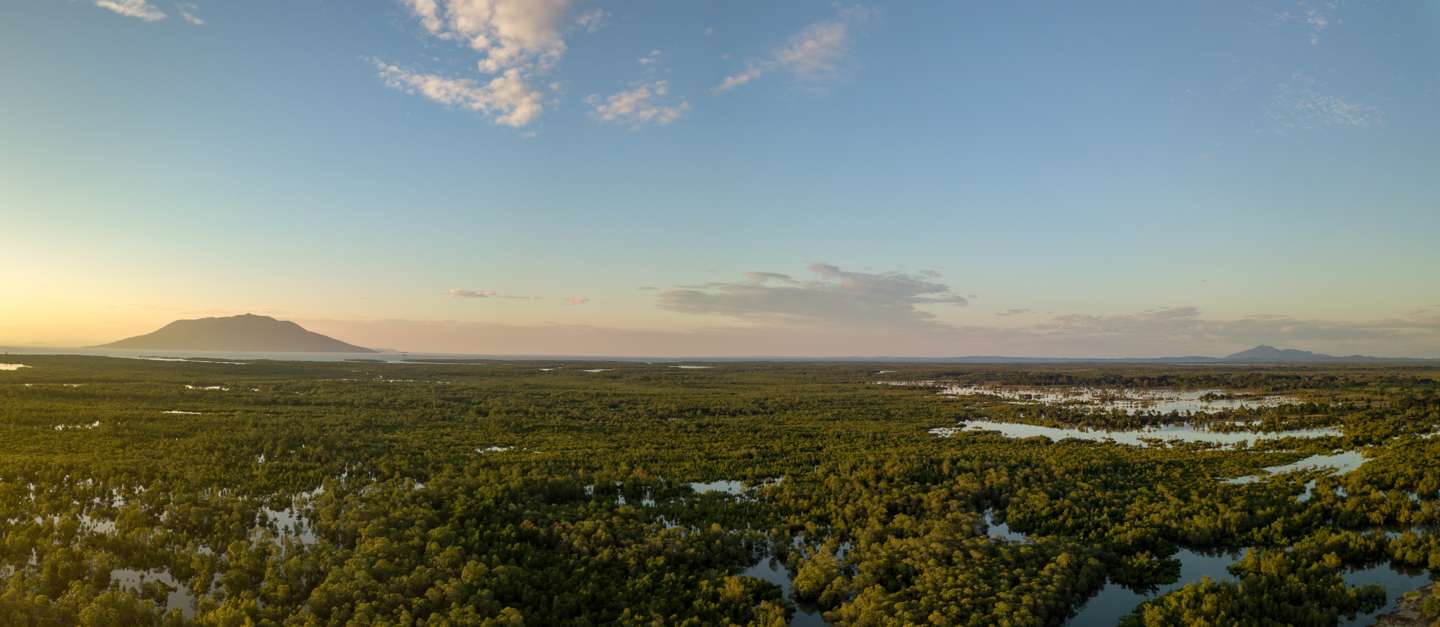
Quantifying the blue carbon in an area the size of Tsimipaika Bay is a massive job | Photo: Leah Glass
The first key moment was way back in 2015 when Professor J. Boone Kauffman of Oregon State University paid a visit to northwest Madagascar.
Boone is an international expert in mangrove ecosystems, and outlined the protocol for carbon stock inventory for the Centre for International Forestry Research in 2012. This protocol, which is now used across the world, defines four main pools of carbon stock: above-ground and below-ground biomass, the fallen wood and the surrounding soil.
In 2015, just after I completed my degree and started working full-time for BV, Boone joined us in northwest Madagascar to lead workshops on sampling methods and data collection. His trip didn’t start smoothly, with his luggage getting lost en route, and then an internal flight cancellation meaning that he had a 20-hour drive from the capital. However, when he finally made it, still in remarkably good spirits, his impact was immediate. Within days, we had location-specific field protocols and a data collection methodology of a truly international standard.
After extracting sediment samples in the field, the next step was organic carbon analysis in the laboratory at the University of Antananarivo. So after another 20-hour bus journey back to the capital, we worked with Boone to refine our lab protocols and had final discussions about the next steps for BV’s blue carbon work.
I’d like to take this opportunity to once again thank Boone for his incredibly valuable advice, and the GEF Blue Forests project for their support. Those few days helped shape our blue carbon work into what it is today, as well as providing Boone with the growthful life experience of having to bail out a rapidly sinking pirogue in Tsimipaika Bay.
The next key moment occurred one year after Boone’s visit when we held a series of training workshops for community-based data collectors in Tsimipaika Bay. These workshops, which were led entirely in the local dialect of Sakalava, aimed to increase the engagement of the communities with the blue carbon monitoring. Through their mangrove and fisheries management plans, communities are responsible for monitoring their resources and enforcing their local laws. By putting the data in their hands, they gain the knowledge necessary to adaptively manage their resources.
We were thrilled at how many people showed up to the workshops, particularly in the village of Andilamboay, and how interested and engaged they were in both the theoretical and practical aspects of the protocol.
Flash forwards in time to March last year (2018), when a representative from the Government of Madagascar’s Ministry of Environment, Ecology and Forestry visited our sites in northwest Madagascar, accompanied by mangrove experts from the United States Forestry Service. They were designing the national strategy for reducing emissions from deforestation and forest degradation (REDD+), and were interested in using our carbon stock inventory protocol to assess mangroves across the country.
After this visit, my colleague Lalao and I were invited to lead a training for Government technicians to pass on our carbon stock inventory and analysis expertise. Working closely with the Government is critical for our blue carbon project, because in order to pass validation under a respected carbon standard (such as Plan Vivo or VCS) our projects need to align with the national REDD+ programme. By actively engaging with and supporting the development of the REDD+ framework in Madagascar we’re ensuring that our projects are compliant with the framework, and that we will be able to deliver financial benefits to the communities we work with.
I am not a particularly good teacher, but I love talking about blue carbon and monitoring mangroves, so training the Government technicians was a rewarding experience. Some of the trainees lost their shoes in the knee-deep mud of the mangrove forests in Majunga, but all of them successfully completed the training.
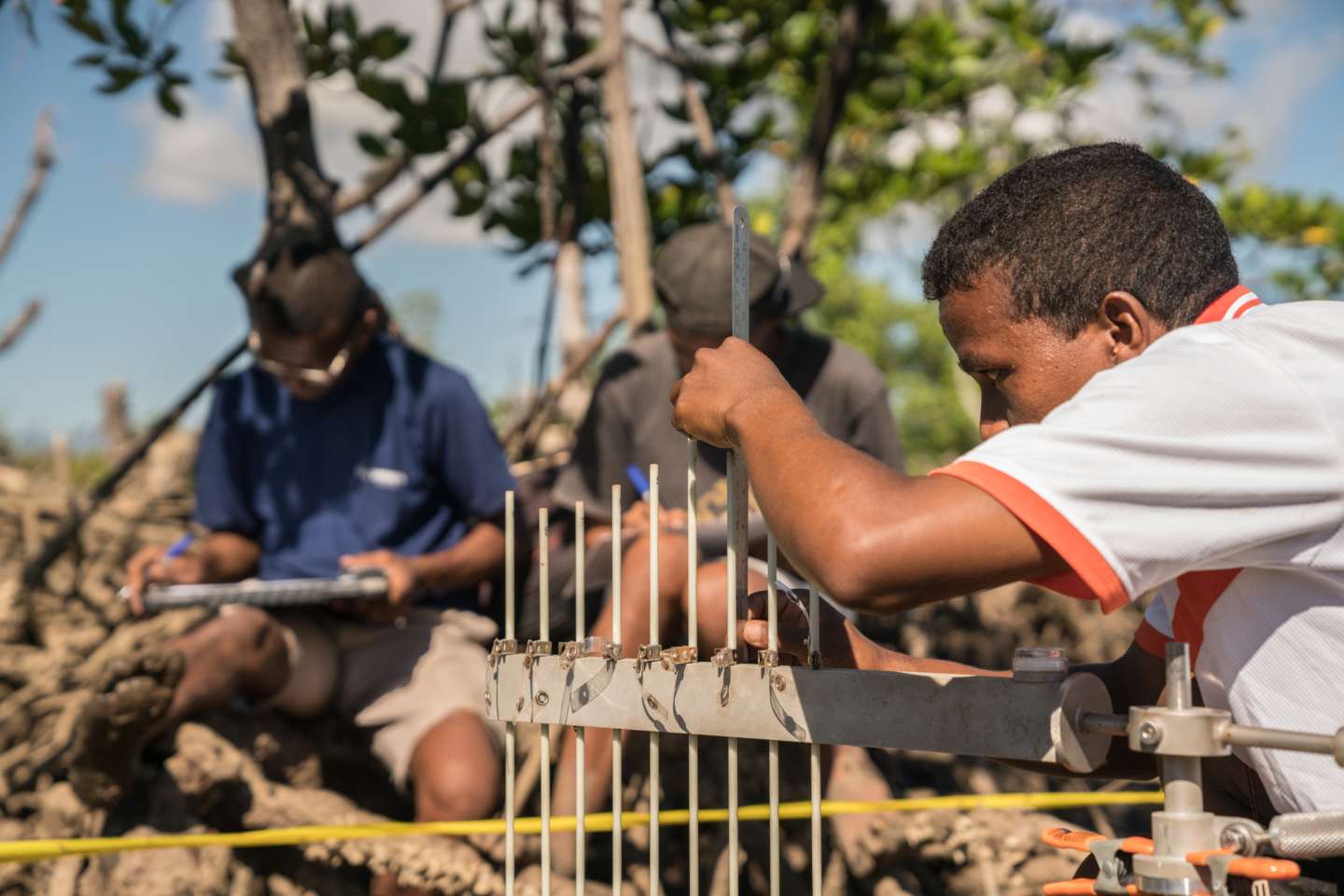
Ismaël calculating carbon stock in Tsimipaika Bay | Photo: Leah Glass
These days, I’m no longer spending long days in the field, instead I’m analysing all the soil samples at the lab in Antananarivo, and trying to enter and manage years’ worth of blue carbon data. I’ve also started a PhD, alongside my BV position, with the aim of filling in the gaps in Madagascar’s National Carbon Stock Inventory and standardising reporting protocols.
I may not be a professor or a good teacher, but I love learning and I love mangroves, and that’s taken me from a Blue Ventures internship in 2013 to where I am today.
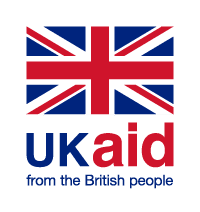
This project was funded by the GEF Blue Forests project, the MacArthur Foundation, and by UK aid from the British people.
Learn more about Blue Ventures’ integrated approach to community-led mangrove management.


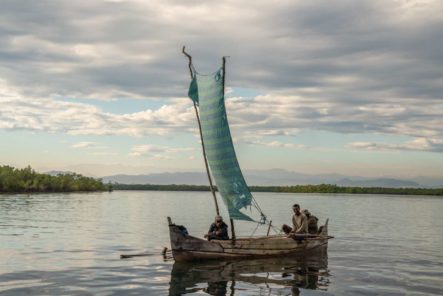
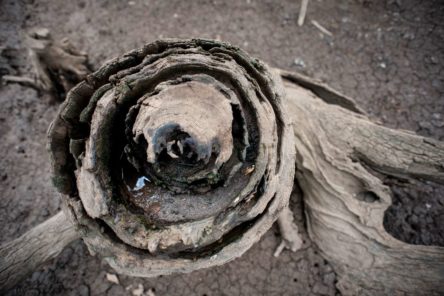
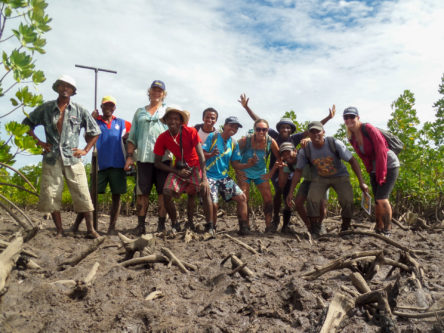
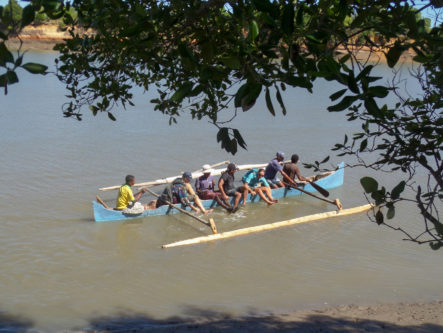
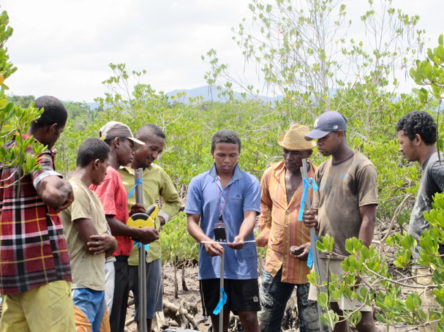
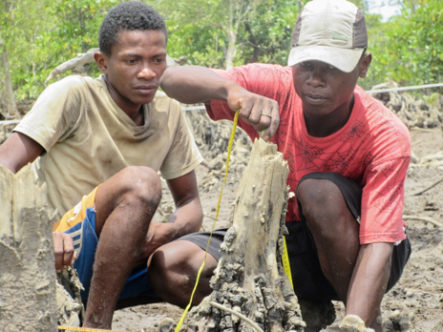
Are there any beekeeping initiatives to enhance the value of mangrove conservation? As beekeeper and Veterinarian just wondering, would love to contribute.